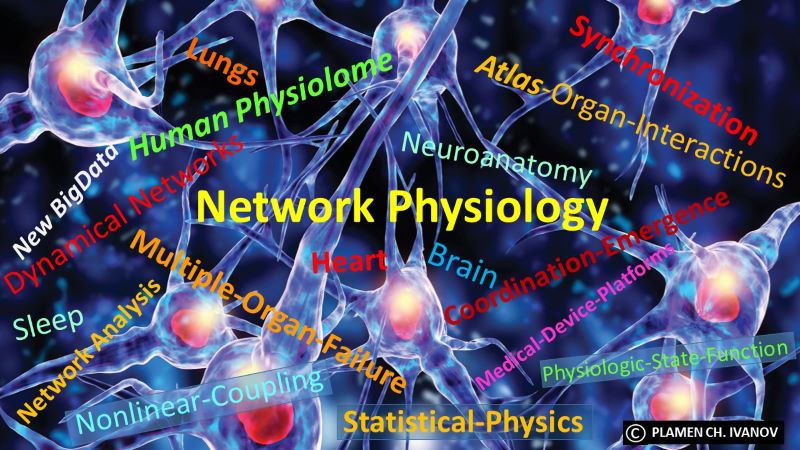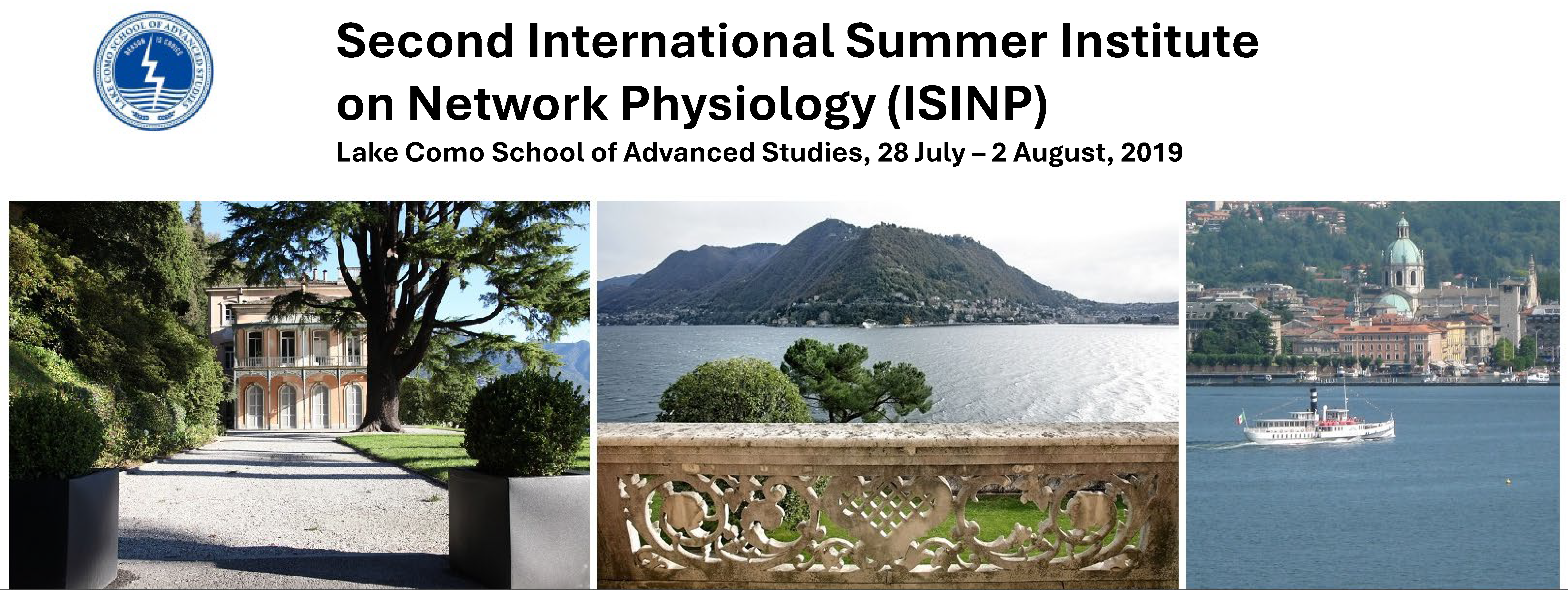Speakers


Françoise Argoul
Professor Françoise Argoul (DR CNRS first class) received her PhD in Dynamical Systems Study of Chemical Chaos at the University of Bordeaux (France) in 1986. Then, she switched her scientific interest to fractal growth processes in cristallization and electrodeposition and shared her time between the Centre de Recherche Paul Pascal (CNRS) in Bordeaux (France) and the Center for Nonlinear Dynamics of the University of Texas at Austin, to collaborate with the experimental group headed by Professor H.L. Swinney. Later on (October 2002), she joined the Ecole Normale Supérieure of Lyon (France) to build a new laboratory (Laboratoire Joliot-Curie) at the physics-biology interface. Very recently (January 2016), she moved back to Bordeaux to join the Laboratoire Ondes et Matière d’Aquitaine (LOMA). Her scientific contribution encompasses many fields of modern physics, including statistical mechanics, dynamical systems theory, chemical chaos, pattern formation in reaction-diffusion systems, the physics of fractals and multifractals, fractal growth phenomena, signal and image processing, wavelet transform analysis and its applications in physics, chemistry and biology, and is presented in 144 peer-reviewed publications. Professor Argoul’s current scientific projects concern the experimental characterization and modeling of the mechanical properties of living cells and tissues and their alteration under stress and/or pathological situations. Her research program combines (i) biophysical experiments on living cells (single or in populations) such as mechanical shear-stress and indentation tools, surface plasmon, phase contrast, quantitative phase imaging, high resolution fluorescence microscopies, (ii) modeling the impact of physical constraints on the fractional rheology (complex dynamics) of living systems and their modifications in pathologies (cancer, myopathies), and (iii) extending the classical formalism for amorphous (stationary) material rheology to a time-frequency rheology of living (active) materials. Professor Argoul is member of the Optical Society of America, the International Society for Optics and Photonics (SPIE), the American Biophysical Society and the European Biophysical Society. In 1990, she received a national recognition for her research (CNRS bronze medal).
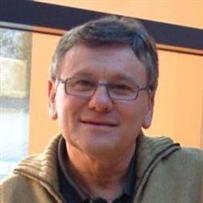
Alain Arneodo
Professor Alain Arneodo (DR CNRS Emeritus) received his PhD in Elementary Particle Physics at the University of Nice (France) in 1978. Then he switched his scientific interest to dynamical system theory and moved to the Centre de Recherche Paul Pascal (CNRS) in Bordeaux (France), to collaborate with the experimental group working at that time on chemical chaos. Later on (October 2002), he joined the Ecole Normale Superieure of Lyon (France) to build a new laboratory (Laboratoire Joliot-Curie) at the physics-biology interface. Very recently (January 2016), he moved back to Bordeaux to join the Laboratoire Ondes et Matière d’Aquitaine (LOMA). His scientific contribution encompasses many fields of modern physics including statistical mechanics, dynamical systems theory, chemical chaos, pattern formation in reaction-diffusion systems, fully-developed turbulence, the mathematics of fractals and multifractals, fractal growth phenomena, signal and image processing, wavelet transform analysis and their applications biological and physiological systems. Major part of his scientific work focuses on bridging the gap between DNA sequence analysis and the study of the structure and dynamics of chromatin as a major actor in the regulation of cell nuclear functions in both health and disease. His current research involves investigations of the mechanisms underlying cellular networks formation and tissue tears. Professor Arneodo is a fellow of the Société Francaise de Physique and of the Société Européenne de Physique. He received, in December 2005 in Brussels, the Prix de l’Académie Royale des Sciences, Lettres et Beaux-Arts de Belgique.
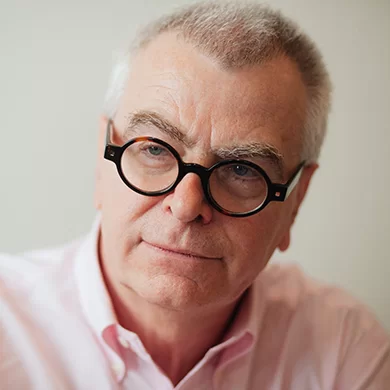
György Buzsáki
György Buzsáki is the Biggs Professor of Neuroscience at NYU Langone Health. He received his M.D. in 1974 from the University of Pécs in Hungary, then earned his Ph.D. in Neuroscience in 1984 from the Academy of Sciences in Budapest. Buzsáki’s primary interests are mechanisms of memory, sleep and associated diseases. His main focus is “neural syntax”, i.e., how segmentation of neural information is organized by the numerous brain rhythms to support cognitive functions. His is best known for his groundbreaking two-stage model of memory trace consolidation, which demonstrates how the neocortex-mediated information during learning transiently modifies hippocampal networks, followed by reactivation and consolidation of these memory traces during sleep. To achieve these goals, he has introduced numerous technical innovations from using silicon chips to NeuroGrid to record brain activity. Buzsáki is among the top 1% most-cited neuroscientists, member of the National Academy of Sciences USA, the Academiae Europaeae and the Hungarian Academy of Sciences, Fellow of AAAS and he sits on the editorial boards of several leading neuroscience journals, including Science and Neuron; honoris causa at Université Aix-Marseille, France and University of Kaposvar, and University of Pécs, Hungary. Dr. Buzsaki’s honors include the 2011 Brain Prize, The Ariëns Kappers Medal (2014), Translational Research Mentor of the Year Award, NYU (2014), Henry Neufeld Memorial Award, Israel (2008); College de France Distinguished Professor, Paris, France (2008); Distinguished Scholarship, Rutgers University (2006); Krieg Cortical Discoverer Award (2001); The Pierre Gloor Award (1997).

Ronny P. Bartsch
Dr. Bartsch studied physics in Konstanz, Germany where he received a M.Sc. degree in theoretical physics in July 2003, and at Bar-Ilan University, Israel where he received his PhD in June 2009. He was a post-doctoral fellow at the Division of Sleep Medicine, Harvard Medical School from 2008 till 2012, after which he joined the faculty at the same division as an Instructor in Medicine. In April 2014, Dr. Bartsch joined the Physics Department at Boston University as a Research Assistant Professor. Currently he is a Senior Lecturer at the Physics Department, Bar-Ilan University. Dr. Bartsch applies methods from statistical and computational physics and nonlinear dynamics to study physiologic systems, sleep regulation, circadian rhythms, and how physiologic transitions affect coupling between organ systems. He is recipient of the prestigious German DAAD Fellowship for the period 2010-2012. In 2012 he was awarded the Young Investigator of the Year Prize by the German Society of Sleep Medicine, and in 2014 he won a “Marie Curie” fellowship from the European Commission.
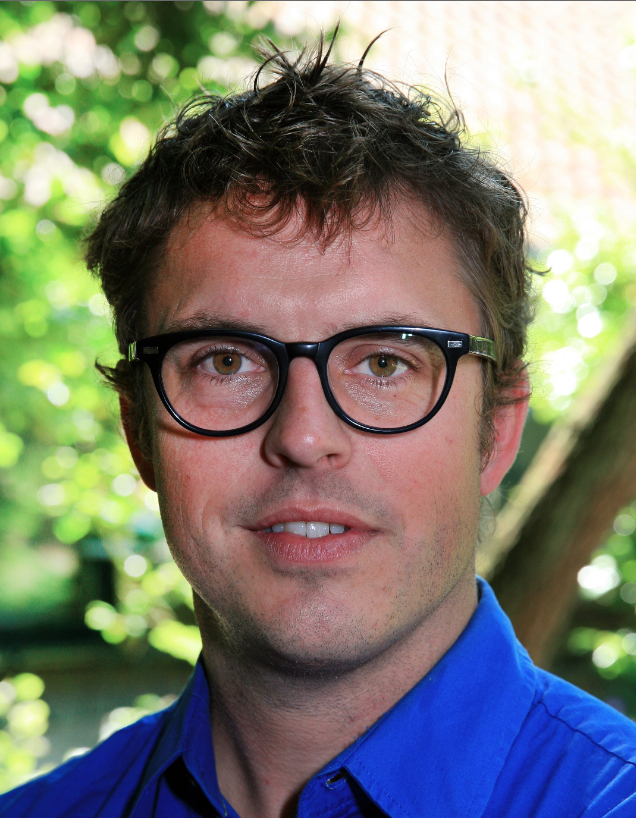
Tjeerd Boonstra
Dr. Boonstra is a Senior Research Fellow at the Graduate School of Biomedical Engineering at the University of New South Wales and Neuroscience Research Australia. He received his MA in Psychology from the University of Amsterdam and his PhD in Human Movement Sciences from the Vrije Universiteit Amsterdam. Since 2007, he is a research scientist at UNSW Sydney where he runs an EEG lab investigating the effects of cognitive tasks and non-invasive brain stimulation on brain functioning. His research includes the use of data analysis techniques such as functional connectivity analysis, multivariate statistics and graph analysis to study brain networks. More recently he applied these techniques to surface electromyography recorded from multiple muscle distributed across the body to map so-called muscle networks and investigate neural pathways involved in motor coordination. In 2018 he received a Future Fellowship from the Australian Research Council to investigate the structure and function of the human spinal connectome. He has published over 50 peer-reviewed publications, including a paper comparing anatomical and functional muscle networks in Science Advances. He has organized BrainModes 2013 in Amsterdam and is the lead guest editor for the special issue on imaging the brain and body in NeuroImage.
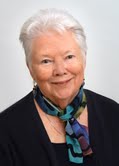
Barbara E. Corkey
Barbara E. Corkey has been the Zoltan Kohn Professor of Medicine and Vice Chair for Research in the Department of Medicine at Boston University. Dr. Corkey has been a leader in the fields of diabetes and obesity research for over 50 years with over 180 related publications and 40 years of continuous government research support. The Corkey laboratory is in engaged in research on obesity and diabetes, with a particular focus on metabolic signal transduction in ß-cells, adipocytes and hepatocytes, intercellular communication via circulating redox and the role of hyperinsulinemia in obesity and diabetes. Projects in metabolic regulation have been ongoing since 1981 using such techniques as single cell imaging, metabolic profiling, ionic fluxes and membrane potential, respiration, redox state, reactive oxygen species generation and diet-induced obesity and diabetes models. She does seminal work on the molecular basis of nutrient signaling that has a major impact on our current understanding of health and disease. Finally, Barbara has received numerous honors including the NIH MERIT Award, National Honorary Membership in Iota Sigma Pi, the National Honor Society of Women in Chemistry, Women in Science Lecturer at the Boston Museum of Science, the George Bray Founders Award of the Obesity Society, the Charles H. Best Lectureship and Award, University of Toronto and the Banting Medal for Scientific Achievement from the American Diabetes Association. A current major focus is on developing clinical/basic collaborative multi-PI grants to explore novel approaches to understand and treat metabolic diseases.
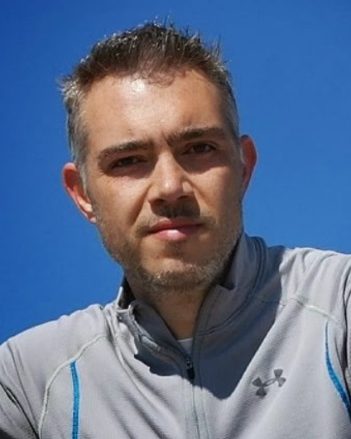
Luca Faes
Dr. Faes is Senior Researcher at the Bruno Kessler Foundation and the BIOtech Center of the University of Trento, Italy. He obtained his PhD in Electronic Engineering at the University of Trento (2003). He has been research fellow at the Department of Physics of the University of Trento (2004-2008) and visiting scientist at the State University of New York (2007), Worcester Polytechnic Institute (2010), University of Gent (Belgium, 2013), University of Minas Gerais (Brazil, 2015), and Boston University (2016). He is a member of the IEEE Engineering in Medicine and Biology Society (IEEE-EMBS), the European Study Group on Cardiovascular Oscillations (ESGCO) and served on the Program Committee of several conferences on medical signal processing. He is Associate Editor of the journal Computational and Mathematical Methods in Medicine, and of the Annual International Conference of the IEEE-EMBS, where he regularly organizes symposia and invited sessions. He was organizer and Program Chair of the 8th ESGCO conference (Trento, Italy, 2014). He works in the fields of statistical physics, computational physiology and neuroscience with focus on developing methods for multivariate time series analysis in the time, frequency and information domains, with applications to cardiovascular neuroscience, brain connectivity and brain-heart interactions. His recent research covers the information-theoretic analysis of physiological networks aimed at the characterization of brain, cardiac and multi-organ physiological mechanisms in physiological states and pathological conditions.

Kathryn A. Hibbert
Kathryn A. Hibbert is a Pulmonary and Critical Care physician at Massachusetts General Hospital(MGH), where she also serves as the director of the Medical Intensive Care Unit. She received her MD degree from Mount Sinai School of Medicine before residency training in Internal Medicine at MGH and serving as a Chief Resident in Medicine. She completed her fellowship in the Harvard Pulmonary and Critical Care Fellowship. Her early research focused on translational ARDS research using functional PET-CT imaging to better understand regional pathophysiology. She now runs a critical care clinical research program that includes serving as the site principal investigator for the PETAL network at MGH and a project that examines the novel use of metabolomics to identify drug resistant pneumonia. In addition, she is a course director for the Harvard Medical School Health Sciences & Technology curriculum, serves as the Critical Core Educator for the Department of Medicine at MGH and has developed a novel advanced physiology course for internal medicine residents. She has won multiple teaching awards and serves as the Associate Program Director for the Harvard Pulmonary and Critical Care Fellowship.
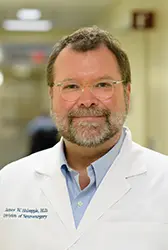
James W. Holsapple
James Holsapple is the Chair of the Department of Neurological Surgery at Boston University School of Medicine and Chief of Neurological Surgery at Boston Medical Center. He is a graduate of the University of Kansas School of Medicine. Dr. Holsapple completed residency training in neurological surgery at SUNY Syracuse where he also served as an intern in general surgery and participated in a NRSA research training fellowship in neuroscience. His research interests include primate motor system anatomy, non-vesicular mechanisms of synaptic acetylcholine storage and secretion, scaling effects of visual stimuli in primate V1, and most recently cerebral blood flow autoregulation and development of non-invasive measurements of intracranial pressure, blood flow, and compliance. Dr. Holsapple is the residency program director for the Beth Israel Deaconess Medical Center/Boston Medical Center training program in neurological surgery. He also serves as the program director of the undergraduate summer program in neuroscience (SPIN) at Boston University School of Medicine.
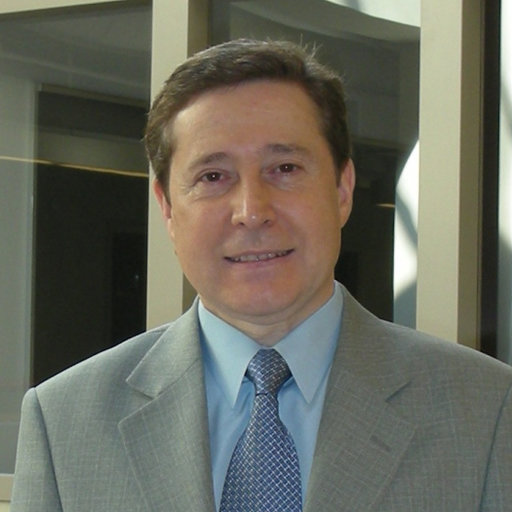
Plamen Ch. Ivanov
Professor Ivanov, PhD, DSc, is Director of the Keck Laboratory for Network Physiology at Boston University, Associate Physiologist at the Division of Sleep Medicine, Brigham and Women’s Hospital, and Lecturer in Medicine at Harvard Medical School. He has introduced innovative ways of analyzing and modeling physiologic systems, adapting and developing concepts and methods from modern statistical physics and nonlinear dynamics. He has investigated the complex dynamics and underlying control mechanisms of a range of physiological systems, including studies on cardiac and respiratory dynamics, sleep-stage transitions, circadian rhythms, locomotion and brain dynamics, and has uncovered basic laws of physiologic regulation. He is the originator and founder of the new emerging field of Network Physiology, to address the fundamental question of how diverse organ systems and sub-systems in the human body interact as a network and continuously coordinate, synchronize and integrate their functions to produce health and disease. Dr. Ivanov is one of the nine founding members of PhysioNet, an NIH sponsored data sharing research resource. His research has been funded by the W. M. Keck Foundation, NIH, Office of Naval Research (ONR) and the US-Israel Binational Science Foundation (BSF). For his achievements, Dr. Ivanov was elected Fellow of the American Physical Society in 2010. He is recipient of the Sustained Research Excellence Award (2009-2011) of the Biomedical Research Institute, Brigham and Women’s Hospital, Harvard Medical School; of the Georgi Nadjakov Medal, Bulgarian Academy of Sciences (2012), and of the Pythagoras Award for significant achievements in interdisciplinary research (2014). He served on several Editorial and Advisory Boards, including EPL (Europhysics Letters), EPJ Nonlinear Biomedical Physics, Journal of Biological Physics (JOBP), Frontiers in Fractal Physiology, Physiological Measurement
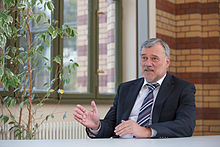
Jürgen Kurths
Jürgen Kurths studied mathematics at the University of Rostock and got his PhD in 1983 at the GDR Academy of Sciences and his Dr. habil. in 1990. He was full Professor at the University of Potsdam from 1994-2008 and has been Professor of Nonlinear Dynamics at the Humboldt University, Berlin and chair of the research domain Transdisciplinary Concepts of the Potsdam Institute for Climate Impact Research since 2008 and a 6th century chair at the Institute for Complex Systems and Mathematical Biology at Kings College of the Aberdeen University (UK) 2009-2017. He is a fellow of the American Physical Society and is a member of the Academia Europaea. He got an Alexander von Humboldt research award and a 1000 Talents award for foreign experts from China and was awarded the L.F. Richardson Medal of the European Geosciences Union. He got several Honory Doctorates and Honorary Professors. He was a Burgers Visiting Professor at University of Maryland and is a Chapman Professor at the University of Alaska (Fairbanks). Jürgen has supervised more than 75 PhD students from about 20 countries; more than 40 of them have now tenured positions in various countries. He has published more than 650 papers in peer-reviewed journals and two monographs which are cited more than 35.000 times (H-index: 85). He is editor-in-chief of the AIP journal CHAOS and is in the editorial board of more than further 10 journals. His main research interests are complex synchronization phenomena, complex networks, time series analysis and their applications in neuroscience and physiology. He works on inferring complex networks from spatio-temporal data in neuroscience to characterize the underlying dynamics and to get new kinds of predictions of extreme events, such as episodes of migraine. Moreover, he is developing multilayer neural networks with time delay to model brain activity, in particular cognitive processes. Another main direction is to develop measures of causality and their applications to physiological signals. He coordinated several large projects in EU and DFG and is now speaker of an International Research Training Group on complex networks (DFG and Brazil), of a Megagrant on inferring models from climate spatio-temporal data (Russia) and of a joint project on collective nonlinear dynamics of complex power grids (BMBF, Germany).
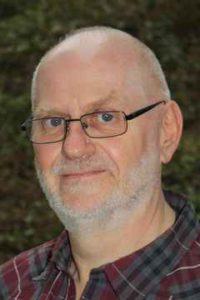
Klaus Lehnertz
Professor Lehnertz, PhD, is a Physicist and Director of the Neurophysics Group at the Department of Epileptology at Bonn University Medical Center. In addition, he is Co-Director of the Interdisciplinary Centre for Complex Systems and an affiliated member of the Helmholtz-Institute for Radiation and Nuclear Physics at Bonn University. He is Co-initiator of the International Seizure Prediction Group, which brings together researchers from a wide range of backgrounds including epileptology, neurosurgery, neurosciences, physics, mathematics, computer science, and engineering to deepen scientific and medical understanding of epilepsy and to develop new diagnosis, treatment and intervention options for patients with epilepsy. For more than two decades, his research group has been developing methods of data analysis and a theoretical framework to understand how brain sub-systems dynamically interact and coordinate functions under physiological and pathophysiological activities. His research interests include nonlinear dynamics, complex networks, statistical physics, neurophysics, computational physics, physics of imaging, medical physics, and epilepsy. He is the author of more than 200 original publications in international peer-reviewed journals, reviews, book chapters, and books.

Fabrizio Lombardi
Dr. Lombardi studied physics at the University of Naples “Federico II” and received his PhD in physics from ETH Zurich. He is presently working as a research scientist at the Keck Laboratory for Network Physiology at Boston University. His research activity aims to uncover the basic physical principles underlying emergent collective dynamics and functions in biological and physiological systems. To this end, he uses methods and ideas from statistical mechanics and nonlinear dynamics. Currently, Dr. Lombardi focuses on ongoing brain activity and criticality, with the objective of enlightening the relation between emergent scale invariance, network collective behavior, and brain functions. He is studying neuronal avalanches and bursting dynamics of brain rhythms across the sleep-wake cycle, and developing a novel theoretical and modeling approach to understand the non-equilibrium features of sleep regulation, e.g. nocturnal arousals. In parallel, Dr. Lombardi is investigating the dynamical organ network interactions characteristic of physiologic states, and their reorganization and breakdown with ageing and pathological conditions. By means of such a holistic approach to human physiology, he ultimately aims to associate distinct physiologic states and conditions with networks of interactions inferred from synchronous recordings of key organs of the human body, and predict their evolution in response to perturbations (e.g. organ failure, medical treatments).
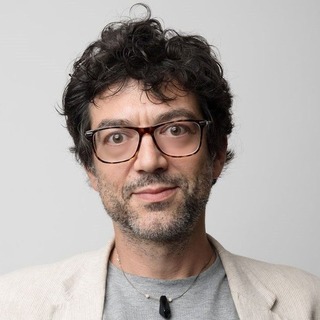
Daniele Marinazzo
Daniele Marinazzo (PhD in Physics 2007) is a Professor in the Department of Data Analysis at the University of Ghent, Belgium. His research covers methodological aspects of neuroimaging data analysis, computational neuroscience, graph theory, and statistical physics. Together with his research team, Dr. Marinazzo develops new techniques for inferring connectivity architectures from the dynamics of recorded brain data, in challenging cases of short, noisy and redundant time series, as those encountered in neuroimaging. He is active and enthusiastic about open science and ways to improve the review and editorial process of scientific research. He serves as editor at several peer-review journals, including PLOS Computational Biology, PLOS One, NeuroImage, Brain Topography, Network Neuroscience, and is recognized as top reviewer (Publons 2016, 2017, 2018) in his field.

Dick Moberg
Dick Moberg has degrees in Electrical Engineering and Biomedical Engineering from the University of Pennsylvania in Philadelphia. He is the founder and CEO of Moberg Research, Inc. which performs research and development in the field of neurocritical care. He has been actively involved in clinical neuromonitoring for over 40 years with most of that time in industry. He and his colleagues have developed three generations of commercial brain monitors used in surgery and critical care. The most recent focus has been to develop a system to collect and time-synchronize high-resolution data from patients in neurocritical care. The data from this device reveals important dynamics of the injured brain. He is leading an international collaboration to develop a new “medical record for the brain”. The data in this record greatly improves the existing medical record with better visualization and detection of events as well as patient state transitions. The hope is that with new analytic techniques and new concepts such as network physiology, clinicians will be able to provide more precise management for these brain injured patients.
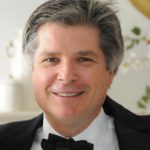
J. Randall Moorman
Randall Moorman, M.D., is Professor of Medicine, Physiology, and Biomedical Engineering at the University of Virginia where he is a clinical cardiologist and founding Director of the UVa Center for Advanced Medical Analytics. He completed his undergraduate and medical degrees at the University of Mississippi, did clinical training at Duke Hospital where he was Chief Medical Resident, and undertook basic science research training at Baylor in molecular electrophysiology and membrane biophysics. His research focuses on bedside prediction of subacute, potentially catastrophic illnesses using advanced mathematical and statistical pattern recognition analyses of time series data from clinical monitors. His work initially centered on neonatal sepsis, a life-threatening infection of the bloodstream, and now on adult patient deterioration in ICUs and hospital wards. He developed sample entropy for use in physiological time series, and he introduced coefficient of sample entropy for detection of atrial fibrillation. He is an inventor on 9 issued US patents, the 2014 UVa Innovator of the Year, and Chief Medical Officer of Advanced Medical Predictive Devices, Diagnostics, and Displays. He is vice-president of the Society for Complex Acute Illness and Editor-in-Chief of Physiological Measurement.
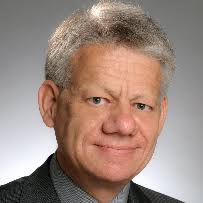
Ulrich Parlitz
Ulrich Parlitz is a research scientist at the Max Planck Institute for Dynamics and Self-Organization, Göttingen (Germany) and an adjunct professor of Physics at the University of Göttingen. He received his PhD in 1987 at the University of Göttingen. From 1989 to 1994 he was with the Institute for Applied Physics at the Technical University of Darmstadt, Germany, and in 1994 he became a scientific assistant at the Third Institute of Physics of the University of Göttingen where received his habilitation in 1997. His main research areas are nonlinear dynamics and data analysis with applications in life sciences, nonlinear oscillators, networks, cavitation, and laser dynamics. In 2010 Ulrich Parlitz joined the Research Group Biomedical Physics at the Max Planck Institute for Dynamics and Self-Organization. There he is involved in theoretical and experimental studies for understanding the nonlinear dynamics of the heart focusing on cardiac arrhythmias. This research includes numerical studies of (transient) spatio-temporal chaos in excitable media and the application of data assimilation methods for fusing experimental measurements (e.g., multichannel ECG time series) with mathematical models of electro-mechanical excitation waves in cardiac tissue. Ulrich Parlitz has published over 170 peer-review publications, including 13 papers in Physical Review Letters. He serves as a panel member of the German Science Foundation (DFG) for Statistical Physics, Soft Matter, Biological Physics and Nonlinear Dynamics, and he is member of the Editorial Board of Frontiers in Applied Mathematics and Statistics (Dynamical Systems) and the Editorial Advisory Board of Chaos: Int. J. of Nonlinear Science.
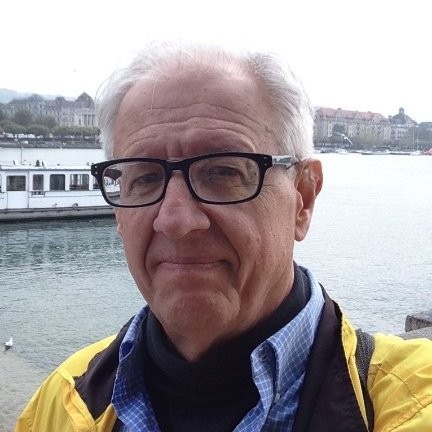
Louis M. Pecora
Dr. Pecora is currently a research physicist at the Naval Research Laboratory, Washington, DC, where he heads the section for Magnetic Materials and Nonlinear Dynamics in the Materials and Sensors branch. He received his B.S. degree in physics from Wilkes College and he then enrolled in the Syracuse University Solid State Science program from which he received a Ph.D. in 1977. In the same year, he was awarded an NRC postdoctoral fellowship at the Naval Research Laboratory where he worked on applications of positron annihilation techniques in determining electronic states in copper alloys. This led to a permanent position at NRL. In the mid-1980’s Dr. Pecora moved into the field of nonlinear dynamics in solid state systems. Subsequent work has focused on the applications of chaotic behavior, especially the effects of driving systems with chaotic signals and coupling nonlinear dynamical systems in complex networks. This has resulted in the discovery of synchronization of chaotic systems, control and tracking, and dynamics of many coupled, nonlinear systems. Recently his research interests have turned to quantum chaos and collective behavior of oscillators in large complex networks, especially using the techniques of computational group theory. Dr. Pecora has published over 150 scientific papers and has 5 US patents for the applications of chaos. His original paper on the synchronization of chaotic systems has over 7000 (ISI) citations and is the 10th most cited paper ever in Physical Review Letters. In 1995 he received the Sigma Xi award for Pure Science for the study of synchronization in chaotic systems. He is also a Fellow of the American Physical Society (APS) and of the American Association for the Advancement of Science (AAAS).
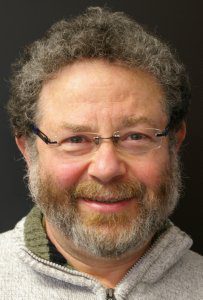
Arkady S. Pikovsky
Professor Pikovsky, PhD, is Chair of the Departmant of Physics and Astronomy, University of Potsdam, Germany. He graduated from the Gorky State University (USSR) in 1987, and worked in the field of nonlinear dynamics and theory of chaos in the Institute of Applied Physics of the Soviet Academy of Sciences. In 1990-1992 was an Alexander von Humboldt fellow at the University of Wuppertal, Germany. Since 1992 he is with the University of Potsdam, first as a research fellow and since 1997 as Professor. His work is in the fields of space-time chaos, dynamical regimes at the border of chaos and order, synchronization theory, noise-induced effects in nonlinear systems, methods of nonlinear data analysis of complex systems, patterns and structures, nonlinear and chaotic effects in disordered Hamiltonian dynamics. He is co-author of three monographs: “Synchronization: A Universal Concept in Nonlinear Sciences”, together with M. Rosenblum and J. Kurths, published by CUP in 2001; “Strange Nonchaotic Attractors” together with U. Feudel and S. Kuznetsov, published by World Sci. in 2006; “Lyapunov Exponents” together with A. Politi, published by CUP in 2016, and of more than 250 papers in refereed journals. Current research interests include study of complex synchronization regimes in networks of dynamical systems, with applications to life sciences. He served as panel member of the German Science Foundation (DFG) for Statistical Physics and Nonlinear Dynamics. A. Pikovsky is Fellow of the American Physical Society and Chaotic and Complex Systems Editor of Journal of Physics A: Mathematical and Theoretical.

Michael G. Rosenblum
Professor Rosenblum, PhD, has been a research scientist and Professor in the Department of Physics and Astronomy, University of Potsdam, Germany, since 1997. His main research areas are nonlinear dynamics, synchronization theory, and time series analysis, with application to biological systems. The most important results include description of phase synchronization of chaotic systems, analysis of complex collective dynamics in large networks of interacting oscillators, development of feedback techniques for control of collective synchrony in neuronal networks (as a model of deep brain stimulation of parkinsonian patients), methods for reconstruction of oscillatory networks from observations, application of these methods to analysis of cardio-respiratory interaction in humans. He studied physics at Moscow Pedagogical University, and went on to work in the Mechanical Engineering Research Institute of the USSR Academy of Sciences, where he was awarded a PhD in physics and mathematics. He was a Humboldt fellow in the Max-Planck research group on nonlinear dynamics, and a visiting scientist at Boston University. He is a co-author (with A. Pikovsky and J. Kurths) of the book “Synchronization: A Universal Concept in Nonlinear Sciences”, Cambridge University Press, 2001 and has published over 100 peer-review publications, including 5 papers in the journals of the Nature Group and 11 papers in Physical Review Letters. Michael Rosenblum served as a member of the Editorial Board of Physical Review E. Since 2014 he is on the Editorial Board of Chaos: Int. J. of Nonlinear Science. He was named an American Physical Society Outstanding Referee for 2015.

Antonio Scala
Dr. Scala, holds a Master degree in Physics and Computer Science from the University of Napoli “Federico II”, a PhD in condensed matter Physics from Boston University. He is a specialist in Operational Research and Decisional Strategies at the department of Statistics of Roma “La Sapienza”. He is also a research scientist in the CNR Institute for Complex Systems at the University of Roma “La Sapienza”, associate professor at IMT Alti Studi Lucca and research Fellow at the London Institute for Mathematical Sciences, LIMC. Dr. Scala is an interdisciplinary scientist with background in statistical physics and computer science. He has published seminal papers on complex networks and has edited the first book on networks of networks (“Networks of Networks: The Last Frontier of Complexity”, Springer 2014). Recently, he has worked on the problem of online misinformation on vaccines. Dr. Scala has applied network science to set up a framework for representation and understanding of medical data in clinical dentistry, and has published first case studies on applications of networks in childhood orthodontics; building up on this experience, he is now working of the network approach to Big Data in Health. His research focuses on developing tools and metrics to derive knowledge from medical records, and complementing clinical trials with statistical analyses of large medical databases.
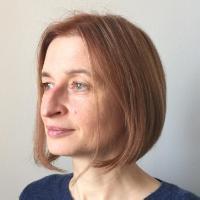
Olga Sosnovtseva
Olga Sosnovtseva, PhD, is Professor with Special Duties at the Department of Biomedical Sciences, University of Copenhagen, Denmark. She received her M.S. and PhD degree in physics from Saratov State University (Russia) and worked in the field of nonlinear dynamics and theory of chaos. She received her second PhD degree in Human Biology from the Faculty of Medicine, University of Marburg, German, and worked in the field of biophysics and mathematical physiology. The most important results include development of nano-sensors to study heme protein properties and signalling pathways in living cells, development of biophotonics tools to study blood flow regulation in microcirculation, introduction of the concept of synchronization to renal physiology, methods to study interaction of physiological oscillations, development of the first nephro-vascular dynamical model of renal autroregulation. She is a co-author of the book “Synchronization: From Simple to Complex” (Springer, 2009), co-editor of the book “Biosimulation in Biomedical Research, Health Care and Drug Development (Springer, 2012) and has published over 150 peer-review publications. She received Skou fellowship (Denmark) for development of mechanism-based models of intercellular interactions and became Edmund Optics Educational Award finalist. She serves as a panel member of Swedish Research Council for Basic disease mechanisms: Molecular, cellular and biochemical aspects, and for Consolidator Interdisciplinary Grants.
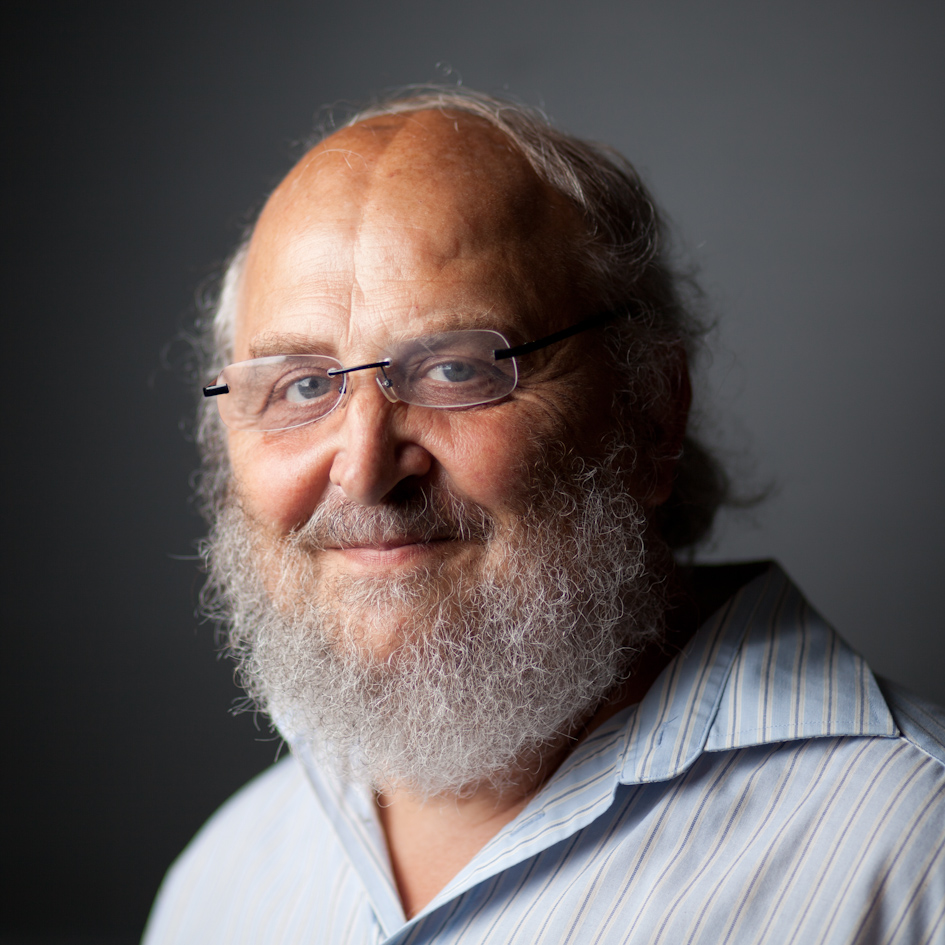
Ruedi Stoop
Professor Stoop studied mathematics at the University of Zurich and completed his PhD in computational physics at the same university in 1991. After obtaining grants from the Swiss National Science Foundation, he became a reader in computer science at the School of Life Sciences, University of Applied Science Northwest Switzerland, and worked in parallel as a scientific advisor and designer for several industrial companies. He became an Associate Professor in physics at the University of Berne in 1997, Adjunct Professor in mathematics at the University of Zurich in 2004 and soon after also in theoretical physics at the Swiss Federal Institute of Technology (ETH). In 2008 he obtained tenure in Neuroscience and Physics at the Institute of Neuroinformatics, run jointly by the University of Zurich and the Swiss Federal Institute of Technology (ETH). His main research directions lie along two related paths: Nonlinear dynamics of biological systems, and principles and applications of biocomputation, seen as domains of mathematics, physics and information science. Prof. Stoop has published a large number of peer reviewed papers documenting a true interdisciplinary approach, from physics over mathematics, engineering, biology to data science. He authored and co-authored books published by Springer, Birkhäuser and World Scientific.

Sebastiano Stramaglia
Dr. Stramaglia is an Associate Professor of Applied Physics at the University of Bari, Italy, and External Scientific Member of the Basque Center for Applied Mathematics, Bilbao, Spain. He received his Ph.D. in Statistical Mechanics of random surfaces from the University of Bari in 1995, and the Laurea degree in models of strongly correlated electronic systems in 1991. Since 2001 he is a member of the Center of Excellence “Innovative Technologies for Signal Detection and Processing”, funded by the Italian Ministry for Scientific Research; since 2002 he is a member of the V National Scientific Commission of INFN-Istituto Nazionale di Fisica Nucleare, Italy. He chaired several international events, including “Modeling Migraine: from nonlinear dynamics to clinical neurology” July 2009, Berlin, and “Nonlinear dynamics in electronic systems” July 2013, Bari. Editor of the books “Modelling Biomedical Signals”, World Scientific 2002, and “Emergent Complexity from Nonlinearity, in Physics, Engineering and the Life Sciences”, Springer 2017. He has been visiting scientist at the Institute for Theoretical Physics NORDITA and at the Department of Data Analysis of the University of Gent, Belgium, and visiting professor at Biocruces Health Institute, Bilbao, Spain. Since 2003 he is team leader of the INFN project “Biological applications of Theoretical Physics Methods”. His research focuses on dynamical networks and Granger causality approaches to physiological interactions, in particular he developed a kernel approach for the inference of nonlinear coupling among dynamical systems with applications to brain function and brain-heart interactions.

Béla Suki
Professor Suki received BS in Physics (1982) and PhD in Biomechanics (1987) from the University of Szeged, Hungary. He worked at INSERM, Nancy, France in 1988 and in the Meakins-Christie Laboratories, McGill University, Montreal in 1990. He received the Dean’s special research associate position at the Department of Biomedical Engineering at Boston University where he became assistant professor in 1996, associate professor in 2001 and full professor in 2007. In 2007, he was elected Fellow of the American Institute for Medical and Biological Engineering. In 2009, he received presidential award from the National Institutes of Health and became honorary professor of Medical Physics and Informatics, University of Szeged, Hungary. He is Fellow of the Biomedical Engineering Society. He was visiting professor at Kyoto University, Japan, University Hospital of Bern, Switzerland, University of Western Australia, Perth, and the University of Ceara, Fortaleza, Brazil. Dr. Suki has published work in morphometric and acoustic network modeling of the lungs airway branching tree. His group introduced elastic networks to describe the mechanics and failure of extracellular matrices to understand how lungs deteriorate during diseases such as emphysema and fibrosis. He developed network modeling approaches to predict the long-term outcome and quality of life following lung surgery, and has implemented a neural network model of the brain respiratory center to describe the variability of breathing patterns. Dr Suki’s current research interests include respiratory physiology, tissue homeostasis and modeling nonlinear and network phenomena in physiology and biology.
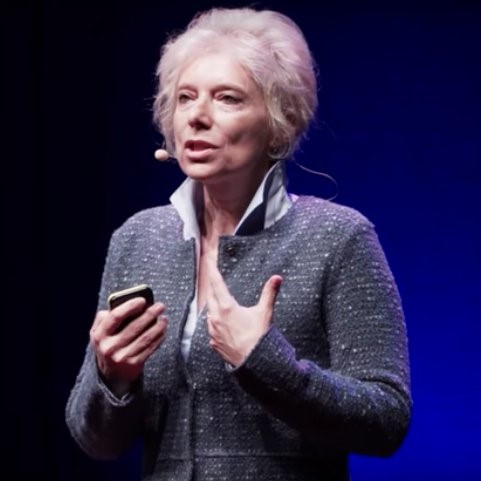
Franca Tecchio
Professor Franca Tecchio is a Senior Researcher at the National Research Council (CNR) in Italy, where she is the Director of the Laboratory of Electrophysiology for Translational Neuroscience (Let’s Laboratory). Her work focuses on methods of brain complexity analysis and therapeutic interventions via precision electroceuticals. Her laboratory utilizes magneto- and electroencephalography (MEG, EEG, EMG) and non-invasive neuromodulation techniques to investigate neuronal electrical activity (TMS, tES, tDCS, tIDS). Dr. Tecchio has seminal contributions to understanding brain function and dynamics through network approaches and to elucidating coupling forms and interactions with other peripheral systems and environment, including brain somatosensory activation and processing in response to body movement; sensory cortex activity in anesthesia; coupling of neural activation and local hemodynamics; cortical responses to auditory stimuli etc. Her work is presented in more than 250 publications. Dr. Tecchio is among the 10 most active Italian researchers in Clinical Neurology (‘La Repubblica Salute’, 2003), and her discoveries are broadly featured in the media, including in ‘Il Venerdì di Repubblica’ (2016), one of the most read weekly magazines in Italy. She appeared as a speaker at the TEDx lecture series in 2016 with more than 42,000 views. She served as the Primary investigator of 32 grant projects, expert evaluator of 18 European funding initiatives (including ERC), and was a Chairwoman of 10 scientific congresses and speaker at numerous international conferences. She is an Associate Editor of the journals Neuroscience and Restorative Neurology.
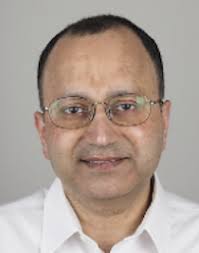
Robert J. Thomas
Robert Joseph Thomas, M.D., M.M.Sc, is Associate Professor of Medicine, Harvard Medical School & The Division of Pulmonary, Critical Care & Sleep, Beth Israel Deaconess Medical Center, Boston, Massachusetts, USA, His background includes Internal Medicine, Neurology and Sleep Medicine. His research spans mood, cognition (translational and epidemiology), sleep epidemiology, signal analysis in sleep medicine, and sleep-breathing outcomes, and functional imaging of cognition in sleep disorders. He has articulated a new approach to sleep physiology termed “sleep effectiveness”, which is a cross-physiology, networked, integrative approach to characterizing sleep state using cardiopulmonary coupling estimates (patented). His laboratory generates novel approaches and analysis tools for probing several sleep signals – ECG, EEG, respiration and multi-signal integration approaches. He funding sources are the NHLBI, NINDS and the American Sleep Medicine Foundation. He was key in the development of a FDA approved wearable device, the M1/SleepImage system, for dynamic sleep quality tracking. He is an acknowledged expert in the area of treatment of central and complex sleep apnea and periodic breathing, utilizing CO2 regulation approaches (patented). He studies brain health in the context of sleep disorders in the USA and South Korea. He directs the AASM accredited clinical sleep center and sleep laboratory, and the sleep medicine training program at the Beth Israel Deaconess Medical Center. I worked in the development and implementation (patented) of auto CPAP algorithms from concept through regulatory submission, which are now in FDA approved products.
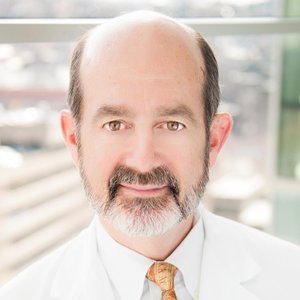
B. Taylor Thompson
Taylor Thompson, MD, is a Professor of Medicine at Harvard Medical School and the Director of Translational Research for the Division of Pulmonary and Critical Care Unit at the Massachusetts General Hospital (MGH), Boston. Dr Thompson served as the Director of the MGH Medical Intensive Care Unit for over 20 years and currently serves as an Associate Editor for Critical Care for the American Journal of Respiratory and Critical Care Medicine. Dr. Thompson is an expert in the design, conduct, and analysisof clinical trials for the critically ill and has coordinate a number of complex clinical trials that have influenced the care of patients with ARDS worldwide. He serves as Medical Director of the Clinical Coordinating Center for the NHLBI’s Prevention and Early Treatment of Acute Lung Injury (PETAL) Clinical Trials Network. This network is currently involved with three large randomized trials of for ARDS and sepsis and for the prevention of critical illness. In addition to ARDS, Dr. Thompson’s clinicaland research interests include functional imaging of the lung using positron emission tomography, diagnostic approaches to pulmonary thromboembolism, and the use of computerized decision support tools in the ICU.
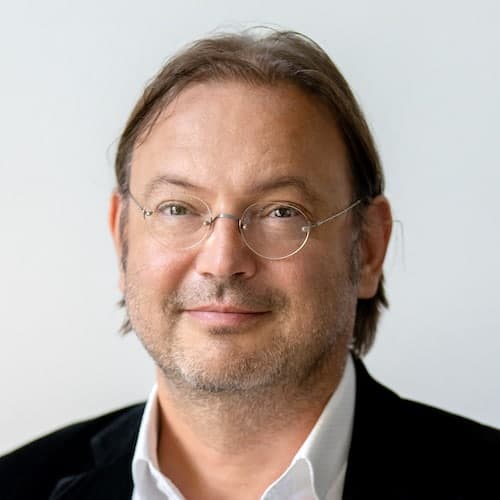
Stefan Thurner
Stefan Thurner is full professor for Science of Complex Systems at the Medical University of Vienna, where he chairs Section for Science of Complex Systems. He is and the president of the Complexity Science Hub Vienna, external professor at the Santa Fe Institute, and a senior researcher at IIASA. Stefan obtained a PhD in theoretical physics from the Technical University of Vienna and a PhD in economics from the University of Vienna. He held postdoc positions at Humboldt University of Berlin and Boston University before joining the faculty of the University of Vienna and later Medical University. His habilitation is in theoretical physics. Stefan started his career with contributions to theoretical particle physics and gradually shifted his research focus to the understanding of complex systems. Stefan has published more than 200 scientific articles in fundamental physics (topological excitations in quantum field theories, statistics and entropy of complex systems), applied mathematics (wavelet statistics, fractal harmonic analysis, anomalous diffusion), network theory, evolutionary systems, life sciences (network medicine, gene regulatory networks, bioinformatics, heart beat dynamics, cell motility), economics and finance (price formation, regulation, systemic risk) and lately in social sciences (opinion formation, buerocratic inefficiency, collective human behavior, efficiency of healthcare systems). He holds two patents. His work has been covered extensively by international media such as the New York Times, BBC world, Nature, New Scientist, Physics World, and is featured in more than 400 newspapers, radio and television reports. For his ongoing efforts and his skills to communicate complexity science to an interested public Stefan was elected Austrian “scientist of the year” in 2018.
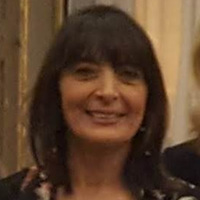
Marina de Tommaso
Marina de Tommaso is Professor of Neurology at the Psychiatric and Neurologic Sciences Department of the Bari University, head of the Applied Neurophysiology and Pain Unit. She graduated in Medicine in 1982, specialised in Neurology in 1986 and in Phisioterapy in 1993 with full marks cum laude at Bari University. In 1994 she received the title of Research Doctor in Human Relational Sciences. From 1995 to 2005 she has been Researcher in Neurology. Since 2008 she is the coordinator of the diploma in neurophysiopathology techniques. She is the Head of the regional referral Center for Huntington’s disease and Neuropathic Pain. She is Editor of BMC Neurology and Pain Research and treatment and Associate editor of Journal headache and Pain journals. She is the President of the Italian Psychophysiology and Cognitive Neuroscience Society. She is author of 170 publications in extenso, concerning the field of Clinical and Applied Neurophysiology, Clinical Neurology, Migraine, Fibromyalgia, Huntington’s disease. She is responsible for more than 20 funded projects from private and public committees (European Commission, Italian Research Ministry, CHDI foundation) Recent studies http://www.ncbi.nlm.nih.gov/pubmed/?term=de+tommaso+m
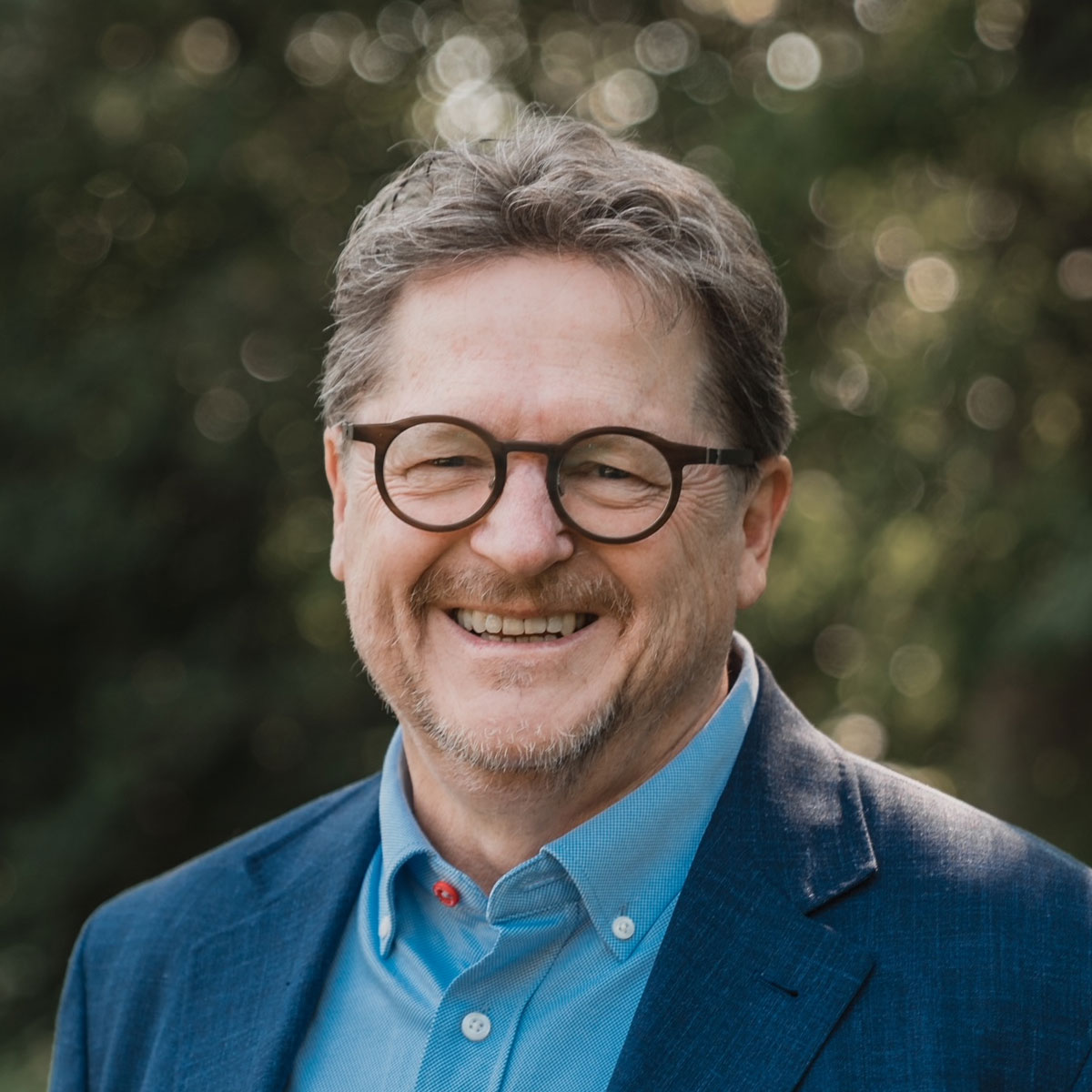
Andreas Voss
Andreas Voss (Male) is since 1997 Full Professor in Biosignal Processing and Medical Informatics at the Ernst-Abbe-Hochschule (EAH) in Jena, Germany. Before that, he worked as leader of the Biosignal Processing research group at the Max-Delbrueck-Centre for Molecular Medicine in Berlin. In 2015, he founded the Institute of Innovative Health Technologies IGHT at the EAH where he acts up to now as the director and coordinates the research between five different departments. His research interest are linear and non-linear analysis of multivariate and multiscale data and systems analysis (e.g. risk stratification in different diseases), characterizing autonomic regulation (heart diseases, schizophrenia, depression, stress…), time-frequency analyses, knowledge based interpretation of physiological and pathophysiological regulations, and electronic senses (electronic nose). Prof. Voss published more than 300 papers in peer reviewed journals. He is member of scientific societies (DGBMT, European Society of Cardiology, and IEEE), organizer, co-organizer and associated editor of various national and international conferences as well as member of scientific boards of various other academic events and scientific journals. He acts as reviewer and for many international journals, conferences and grant agencies.
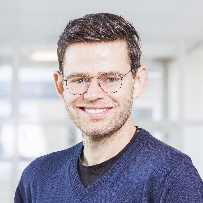
Sebastian Zaunseder
Professor Sebastian Zaunseder worked as scientific coworker at the Fraunhofer Institute for Photonic Microsystems (Dresden, Germany) from 2007 to 2011. He received the Ph.D. degree in electrical engineering from TU Dresden (Dresden, Germany) in 2011. In 2011, he joined the Institute of Biomedical Engineering (IBMT) of TUD, where he was head of the group Medical Sensing and Signal Processing. During his membership at IBMT, he was visiting researcher at the University Medical Center Schleswig-Holstein (Kiel, Germany) and at The University of Adelaide (Adelaide, Australia). In 2019, he was appointed as a Professor in the field of biomedical engineering at the University of Applied Sciences and Arts Dortmund. Sebastian’s work centers on the innovative and efficient data usage of variable origin. Research interests consequently cover biomedical signal processing, image processing, machine learning and modelling. Together with his research team, Sebastian employs, combines and further develops methods from said fields to establish innovative diagnostic systems, to provide clinical decision support and to deepen the understanding of pathophysiological interactions. Applications stem from different fields, ranging from clinics to daily life and sports. Sebastian is author of more than 100 scientific contributions in journals and conferences. He has contributed to the organization of different conferences as committee member, track chair and general chair. He works as reviewer for different journals and he is currently chairman of the committee Biosignals of the German Society of Biomedical Engineering (DGBMT).
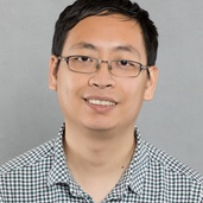
Xiyun Zhang
Dr. Zhang received his PhD in theoretical physics at East China Normal University in June 2016. Currently he is a post-doctoral fellow (supported by W.M. Keck Foundation) at Keck Laboratory for Network Physiology, Boston University. Dr. Zhang’s main research interest is to understand complex phenomena and collective behaviors in physical, physiological and biological systems utilizing methods and concepts from nonlinear dynamics and statistical physics. His research focuses on synchronization in coupled oscillators in complex networks; developing novel time series analysis methodology to probe network interactions among physiological systems; building new biomarkers based on organ interactions for early diagnosis; understanding regulatory mechanism underlying different physiological states from the point of view of Network Physiology.
